With its tropical plumage, the kingfisher is a rare and striking appearance in our landscape, for many people an encounter with a kingfisher is a highlight of the day. Nevertheless, it is not very difficult for an experienced kingfisher connoisseur to regularly see a kingfisher, provided you get to know the sound, behavior and tracks. On this page some tips to increase your observations, focusing on the fall and winter.
Be careful! Especially in autumn and certainly in winter for a weakened kingfisher 1 fish can make the difference between survival or not, so keep your distance and do not disturb the kingfisher(s)!
Size and appearance
The fact that we do not see a kingfisher that quickly despite its striking plumage is partly due to its small size. Not much bigger than a sparrow (it looks a bit bigger due to its large beak), it is quickly overlooked. Only when you have gotten too close to the bird, will it shave, whether or not accompanied by a loud beep (see below at Sound), like a spear over the water. This is often the only thing you get to see, further on the kingfisher lands in a bush again and is hidden from view. The bright blue iridescent stripe on its back stands out in flight, especially in a clear sky, once resting among the foliage, this striking plumage is little to be seen. With a bit of sun on its back it sometimes jumps out, but once in the shade or in cloudy weather the blue-orange plumage seems strangely enough to blend into the environment.
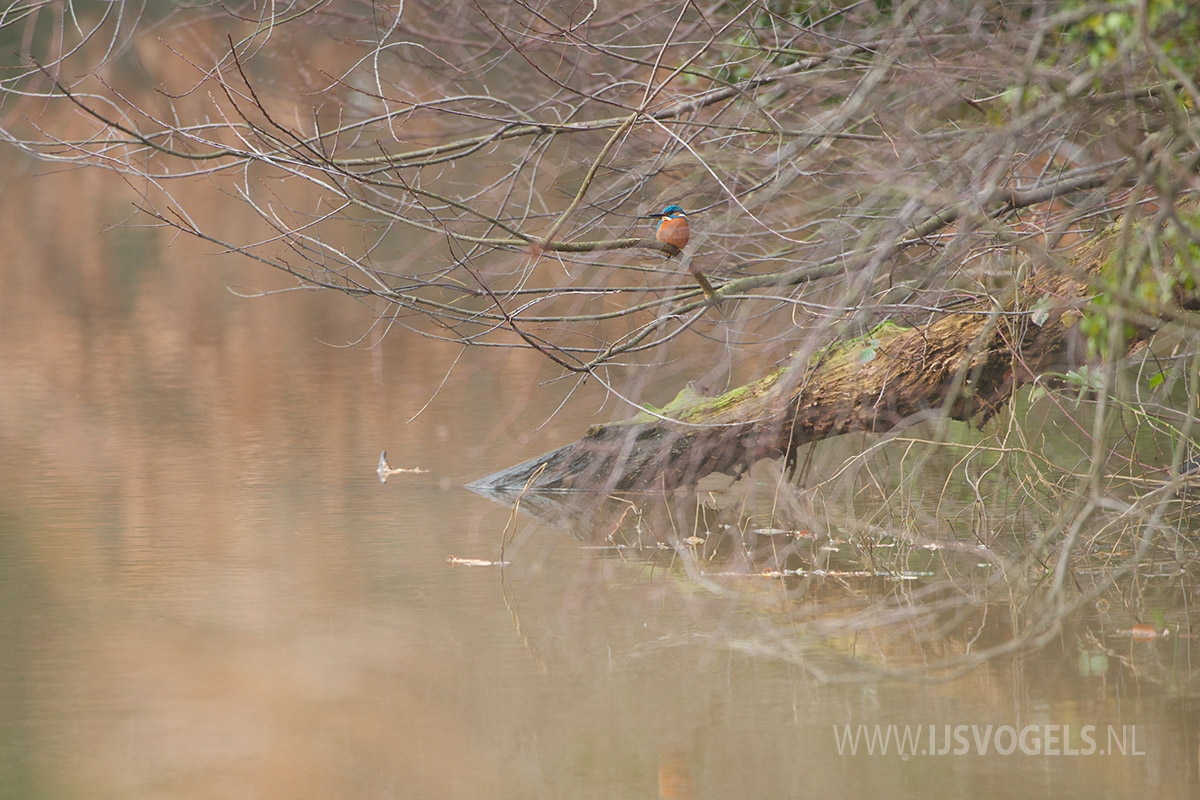
For example, its orange breast can hardly be distinguished from an autumn leaf at a distance in autumn. It is therefore often difficult to discover it in a densely vegetated location, fortunately a kingfisher never really sits still for long in one place. For those with a little patience, it is therefore advisable to take a seat along the water’s edge and keep a close eye on the water surface. Kingfishers usually fly in a tight line just above the surface of the water and when they soar from one fishing spot to another, often with their distinctive call, they are hardly to be missed. They also often have favorite spots where they return regularly, as they have been able to successfully catch fish there in the past. Once a kingfisher has been seen in such a spot, keep an eye on it afterwards, chances are you will see it more often.
Sound
Your chances of seeing a kingfisher greatly increase when you learn to recognize their sounds. The most characteristic is the high-pitched beep during flight. In order to let conspecifics know that they are coming or to mark their territory, people almost always flee. A high, abruptly broken tieee! like this little man makes in the video below. When you get to (re) know this sound, you will notice that your perceptions increase enormously. When you hear the sound, look across the surface of the water to see if you see the kingfisher flying close to the water in its fast, tight flight.
This dominant male had entered “strange” territory and was sitting on a branch near the nest, calling menacingly. At the Video page you will find some films in which you can hear more sounds of kingfishers.
Where to see in fall and winter?
In the breeding season we mainly encounter kingfishers along streams, rivers and large water features with breeding opportunities in the form of steep banks or clods of fallen trees. In the fall and winter you will find kingfishers almost everywhere, the young kingfishers that have flown out are mainly looking for an easy-to-catch meal of fish and most fish are usually in the water 🙂 You will rarely see a kingfisher or never find anything near water. In addition to the expected locations where they also breed, you can see them in the most unexpected places, both inside and outside the built-up area. For example, I regularly received reports from Amsterdam, kingfishers were seen near the canals but also in the Vondelpark. Even the smallest pond in the middle of a residential area, without directly open water in the vicinity, already has a chance of a visit. These are of course exceptions and not every day, so we mainly focus on the places where the chance is much greater.
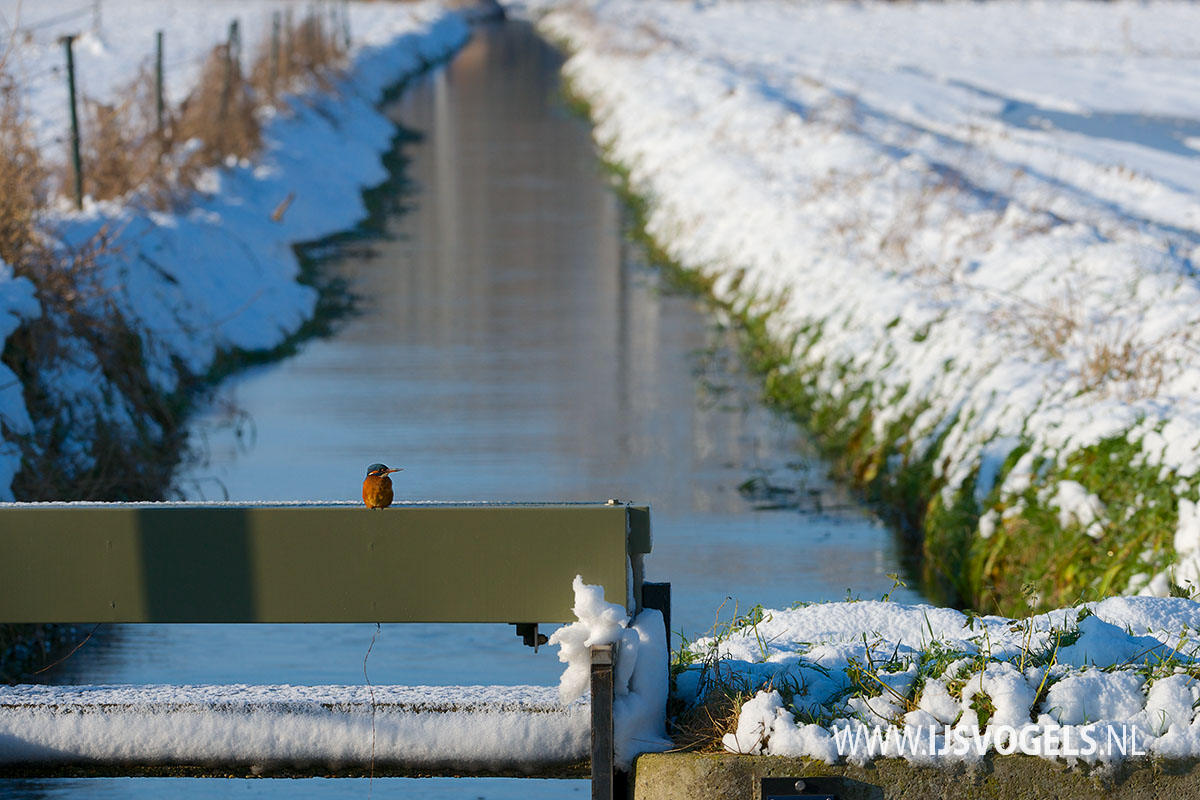
Since a kingfisher is dependent on fish for its livelihood, it is useful to know where most fish live in the water. This is usually close to a change of current or depth, places with oxygen, or a place where food can naturally be found. At dolphins, locks, weirs and the like, there is often a higher concentration of fish and offer the kingfisher an immediate lookout from which to fish. Each object is also used to sit on, including man-made constructions.
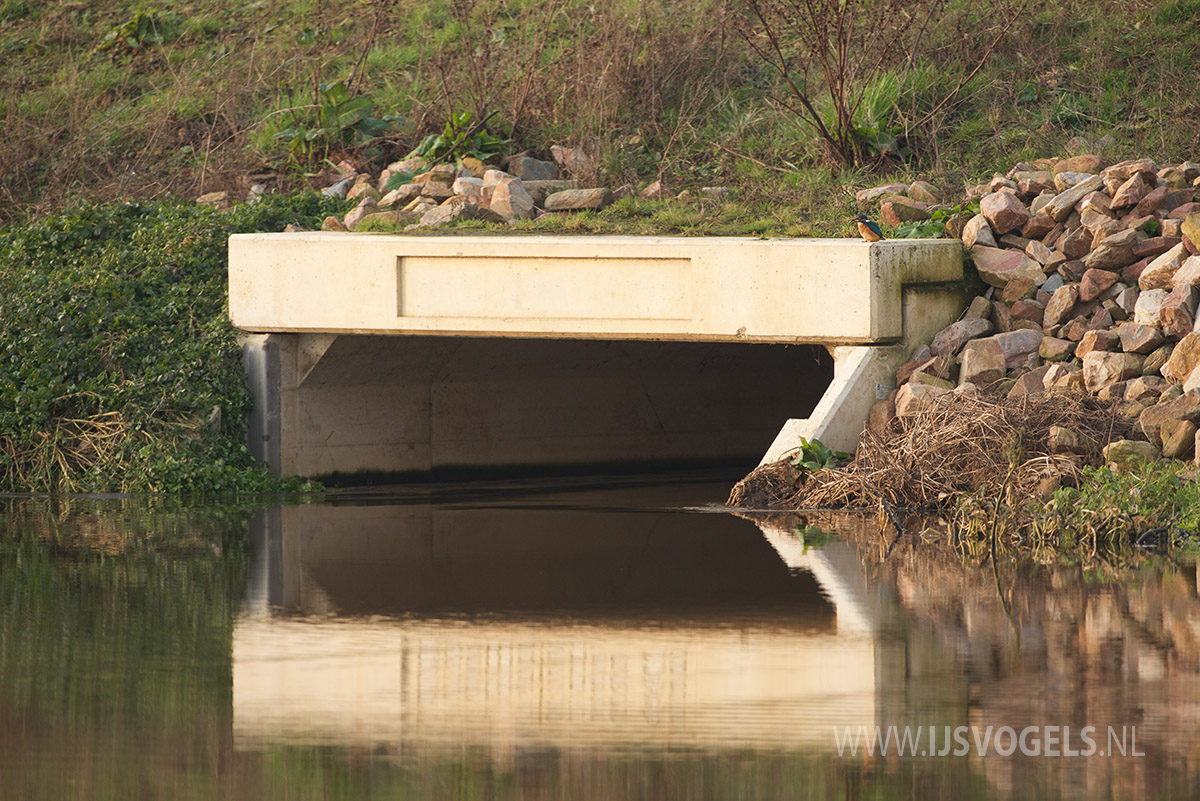
The photo above immediately shows why a kingfisher is often overlooked, its small size and (although it is free here) colors that blend in with the environment. It is therefore important to search for possible fishing spots, everything that protrudes above the water surface, in whatever form, posts, railings, walls along a bridge, etc.
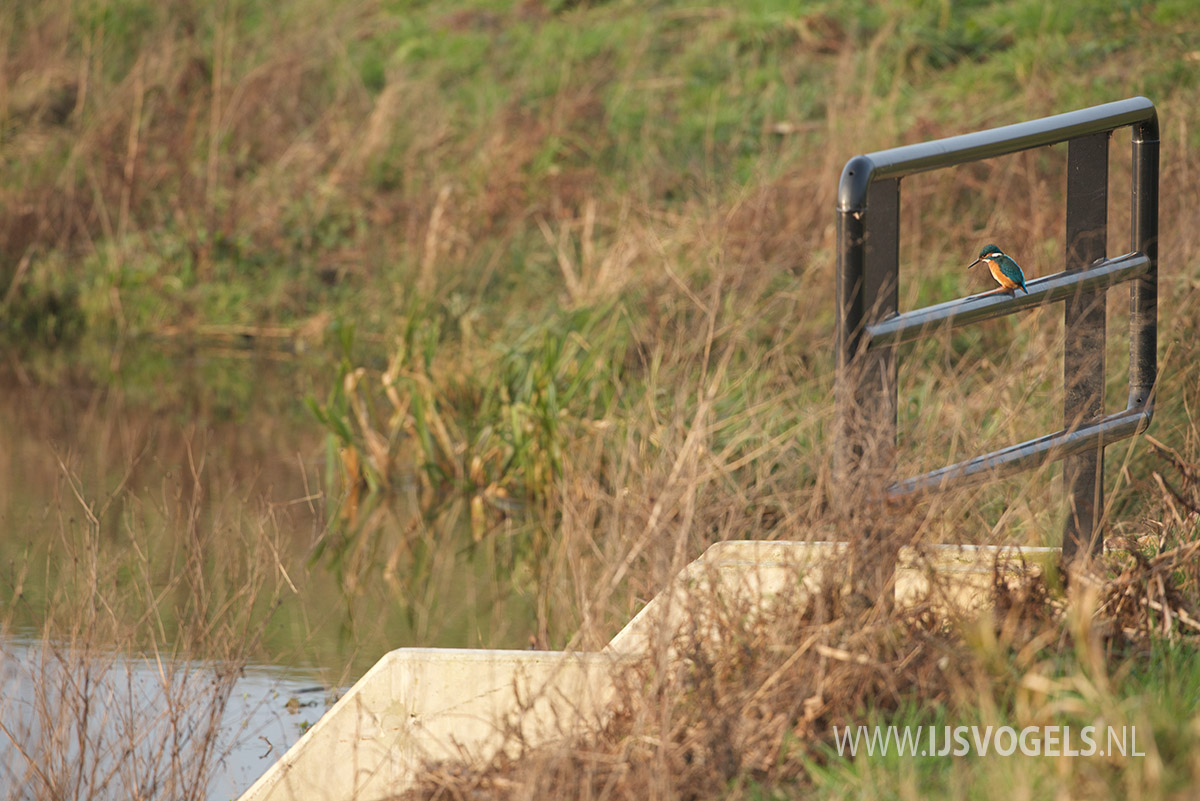
These are all potential spots for the kingfisher to look for fish. The favorite height is about 1 to 2 meters, the kingfisher can immediately start his dive from that height. Higher and lower also occurs, from a lower vantage point a small distance is first flown, also depending on the depth at which the fish is located.
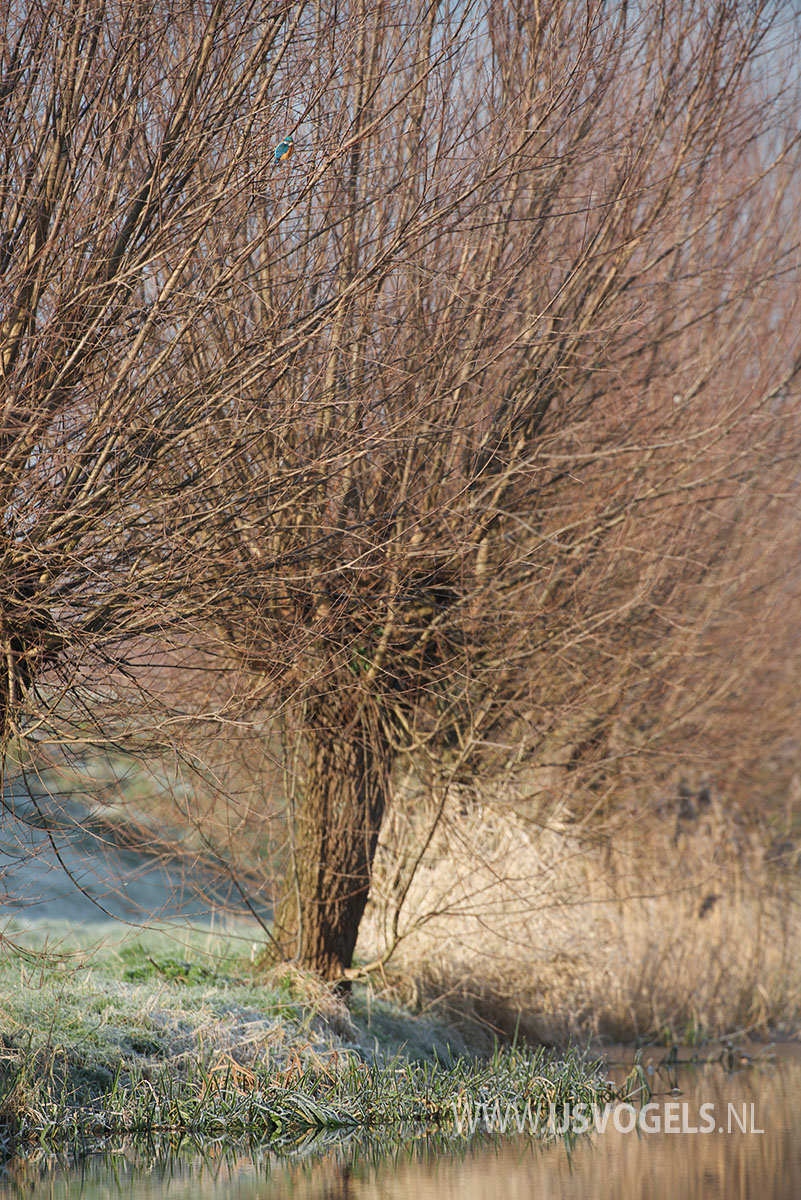
From a higher position (the kingfisher is almost at the top in this photo) the dive is started as a kind of gliding flight, which is converted into a dive. In the garden of a previous house I once saw a kingfisher dive from 5 meters high in a pond which was only 20 cm deep on the spot. Vegetation along the water is nice as shelter, but you can also find kingfishers along long bare straight polder ditches in the autumn and winter, especially look at the previously mentioned locks and the like.
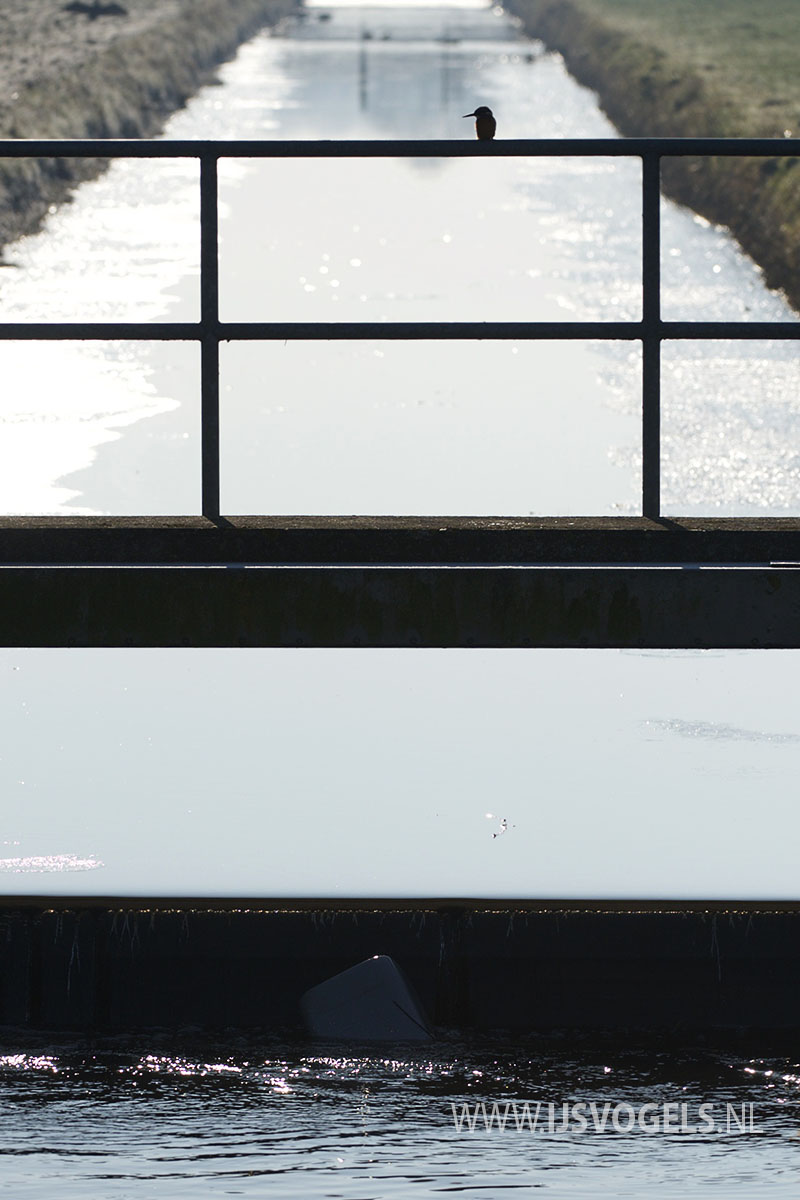
Even backlit, the kingfisher immediately stands out because of its characteristic posture and long beak. You can even find them on bridges along fairly busy roads, as shown in the pictures below.
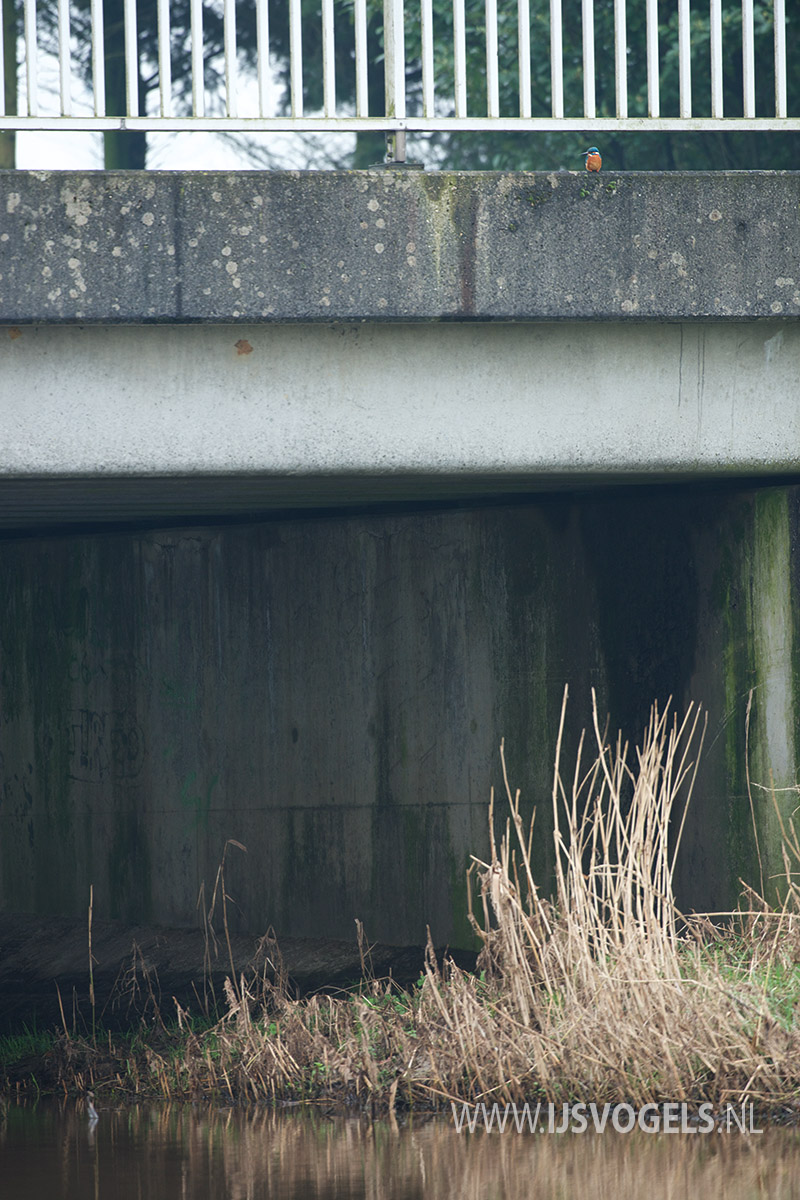
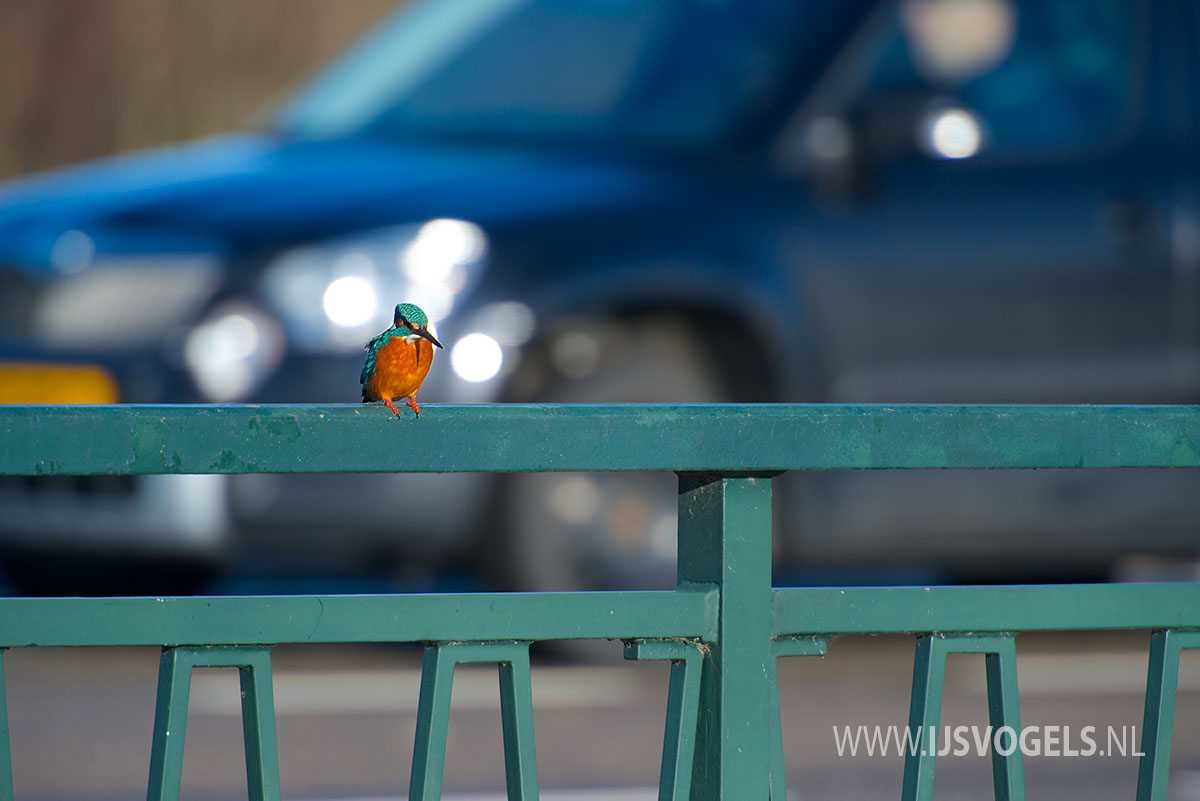
Fish like to hide in the dark water under a bridge or dolphin, when they swim out of it for a while they are lost.
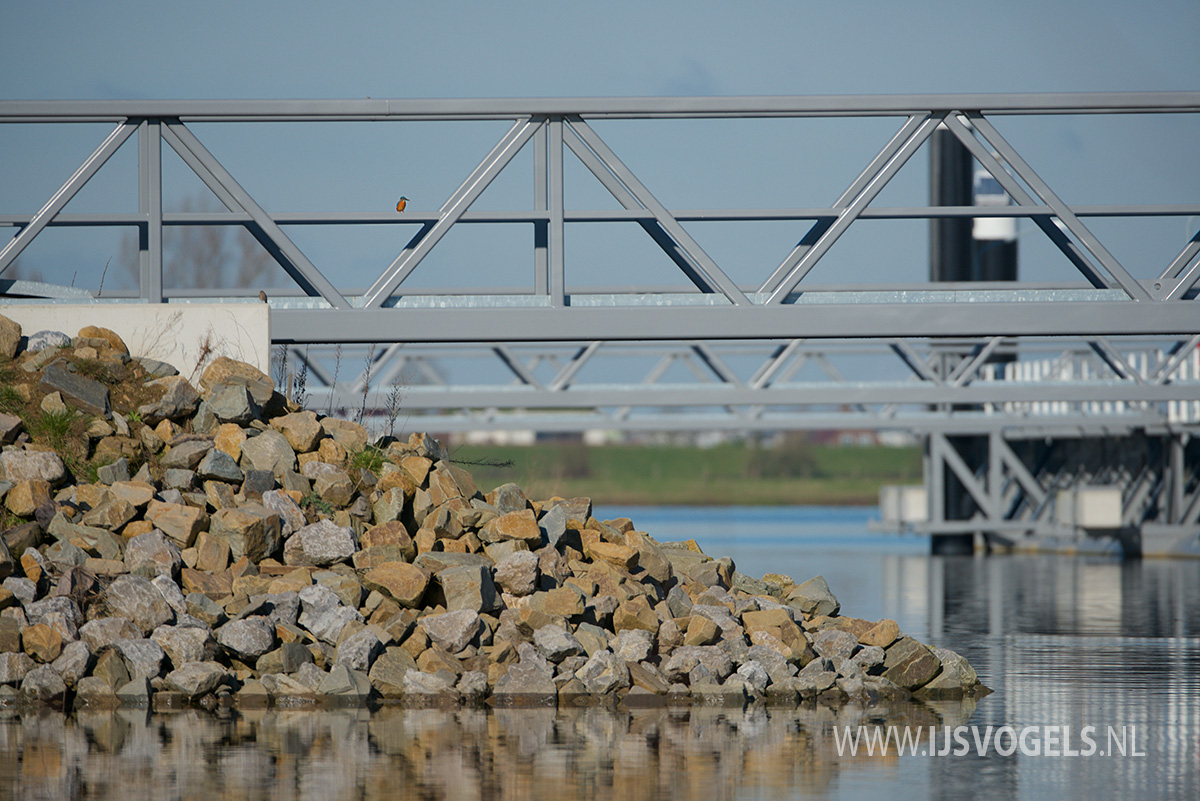
These footbridges for ships by the river also offer a nice place to outwit a fish.
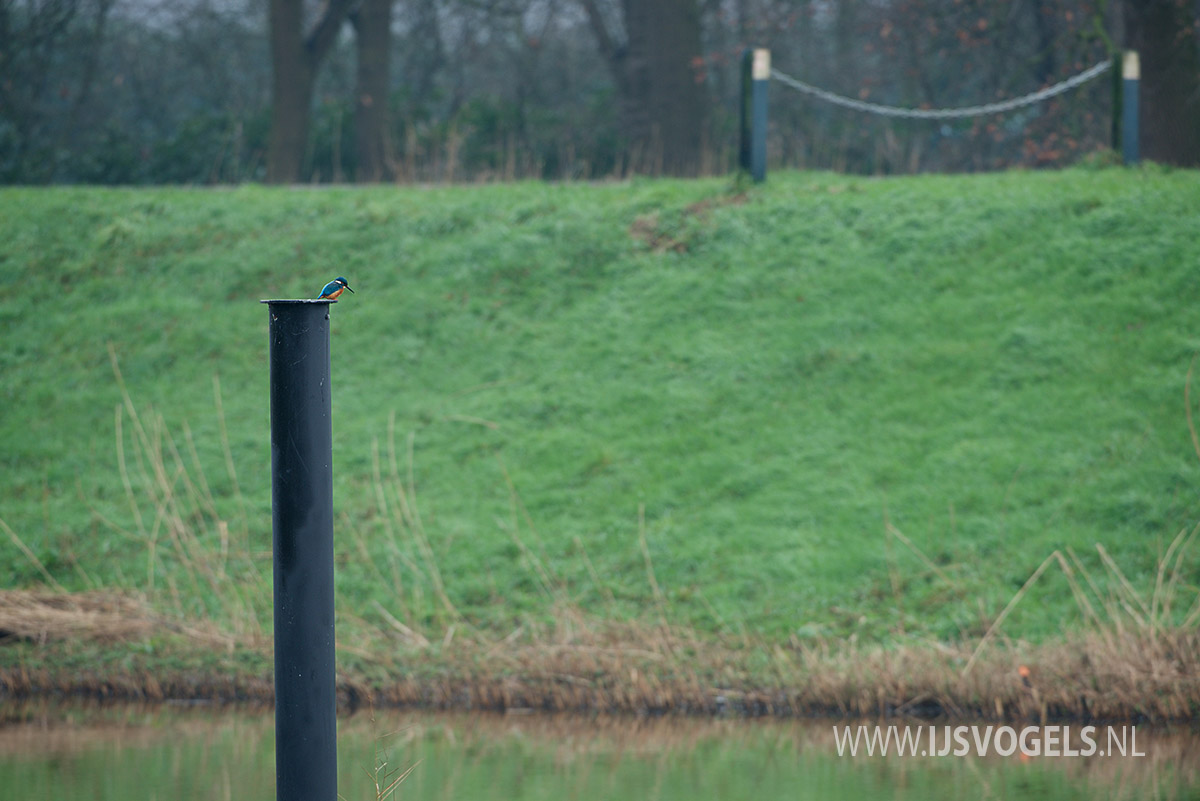
A high pole in a medium-sized river, always check if there is one…
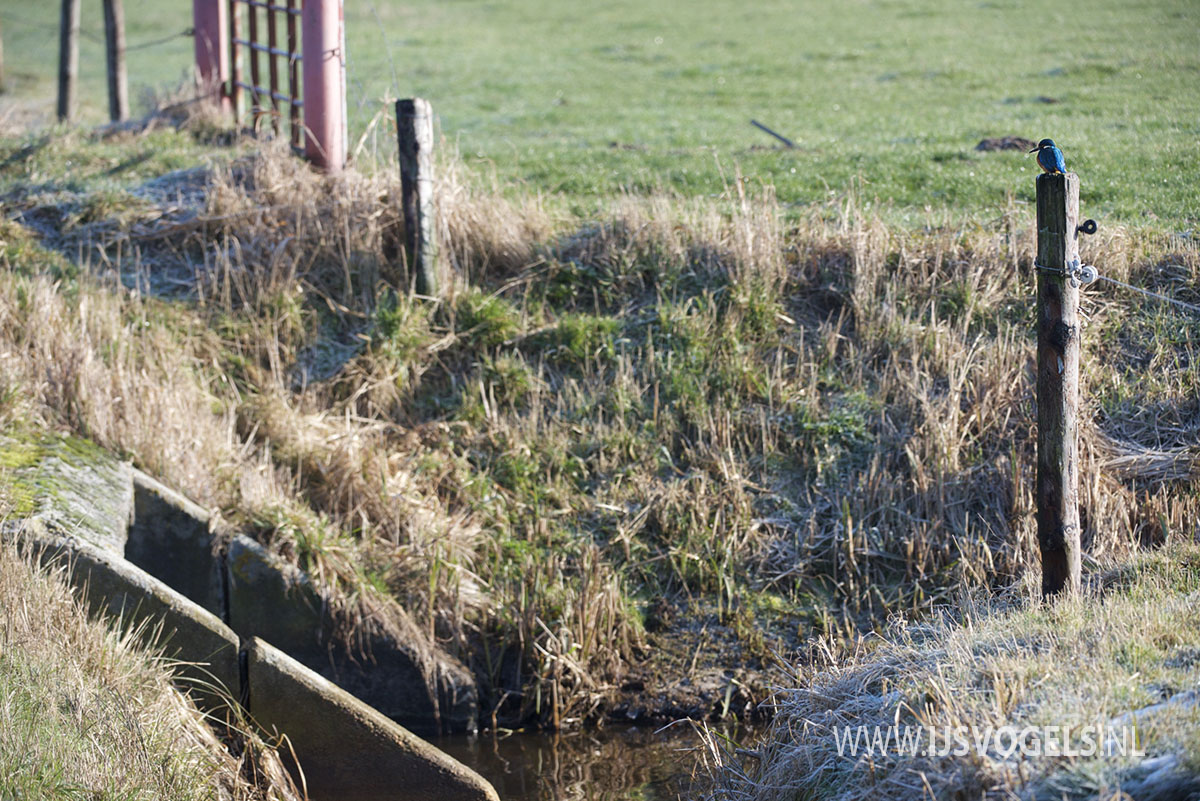
A small stream of a good meter wide, less than 30 cm deep, a bit messy, not exactly a kingfisher spot from the book, but in a cold winter an ideal spot to catch a fish.
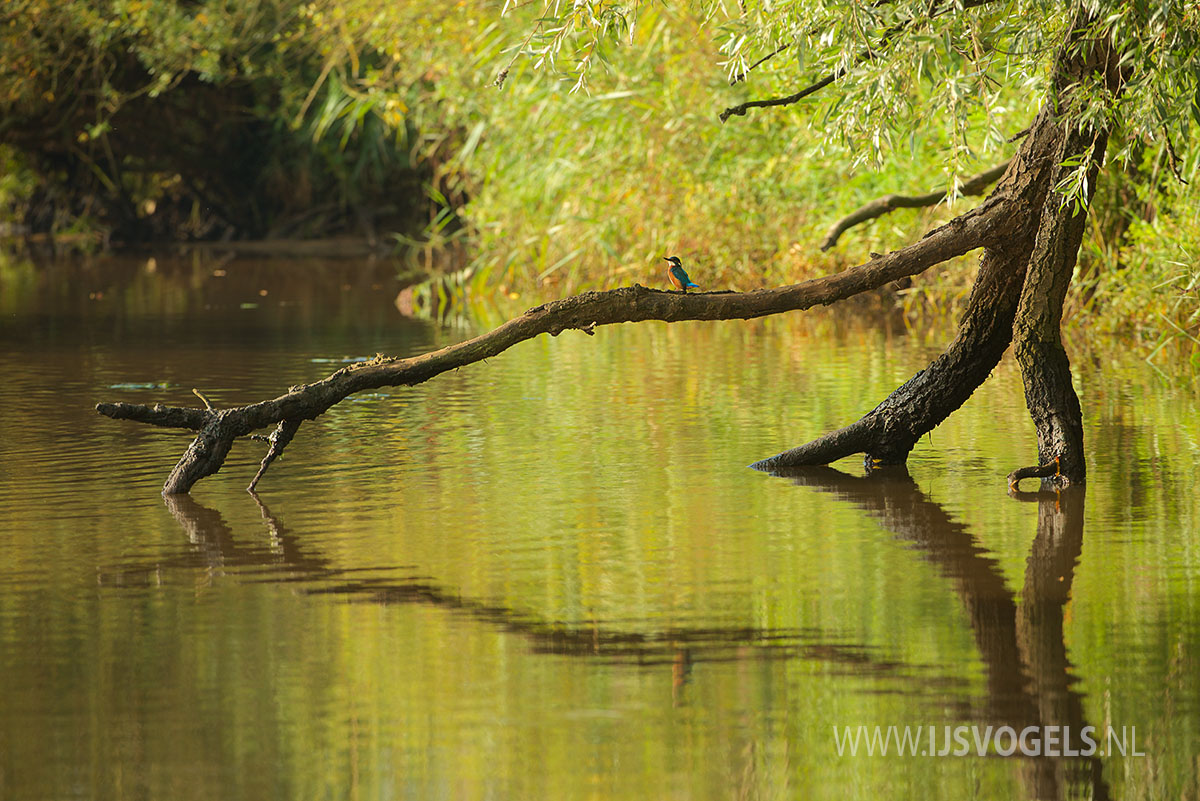
An overhanging branch on a piece of water rich in fish, that is a bit more obvious.
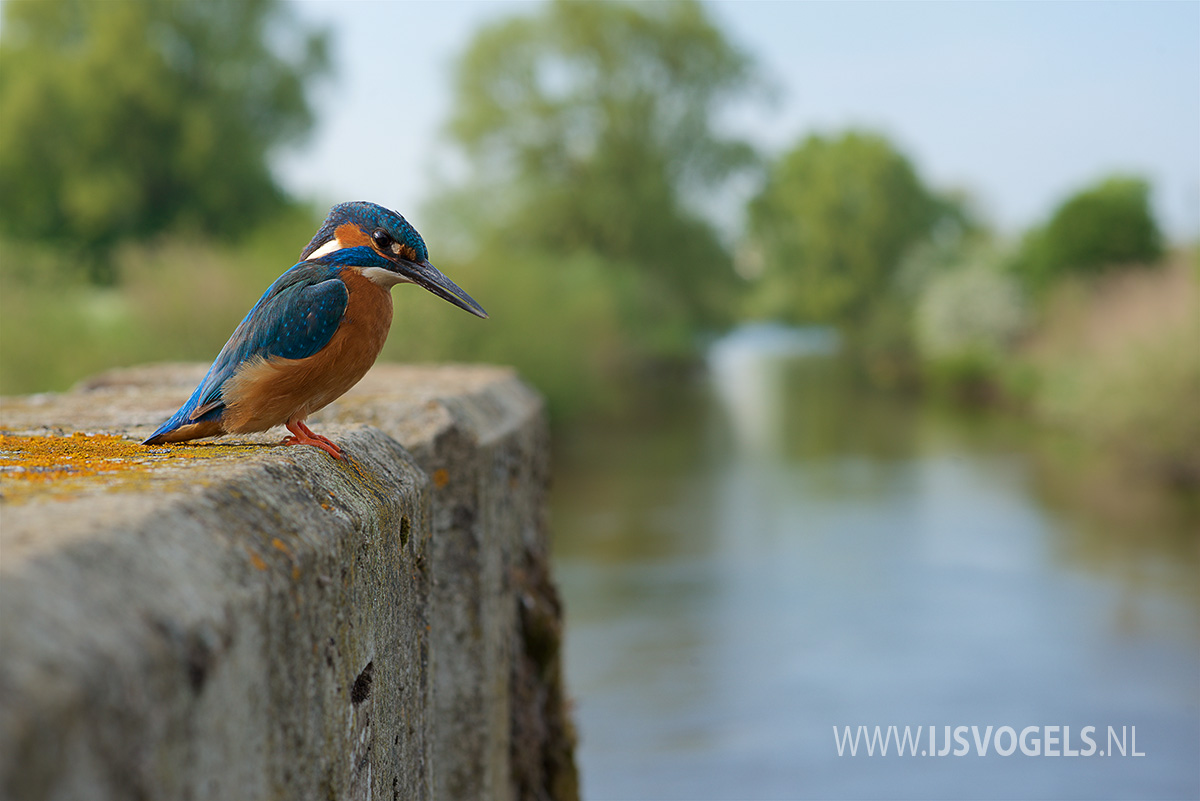
In winter, sluices and weirs are favorite, especially because these places are less likely to freeze over.
Traces
If you suspect kingfishers at a location, but you have not seen or heard them yet, pay attention to the traces they leave. The spores, in the form of excrement, pellets and fish scales, are characteristic of the kingfisher and are not produced by any other bird in the Netherlands. First of all, the excrement; a kingfisher sprays its faeces with a strong jet outwards, in contrast to, for example, a songbird, which “drops” its faeces.
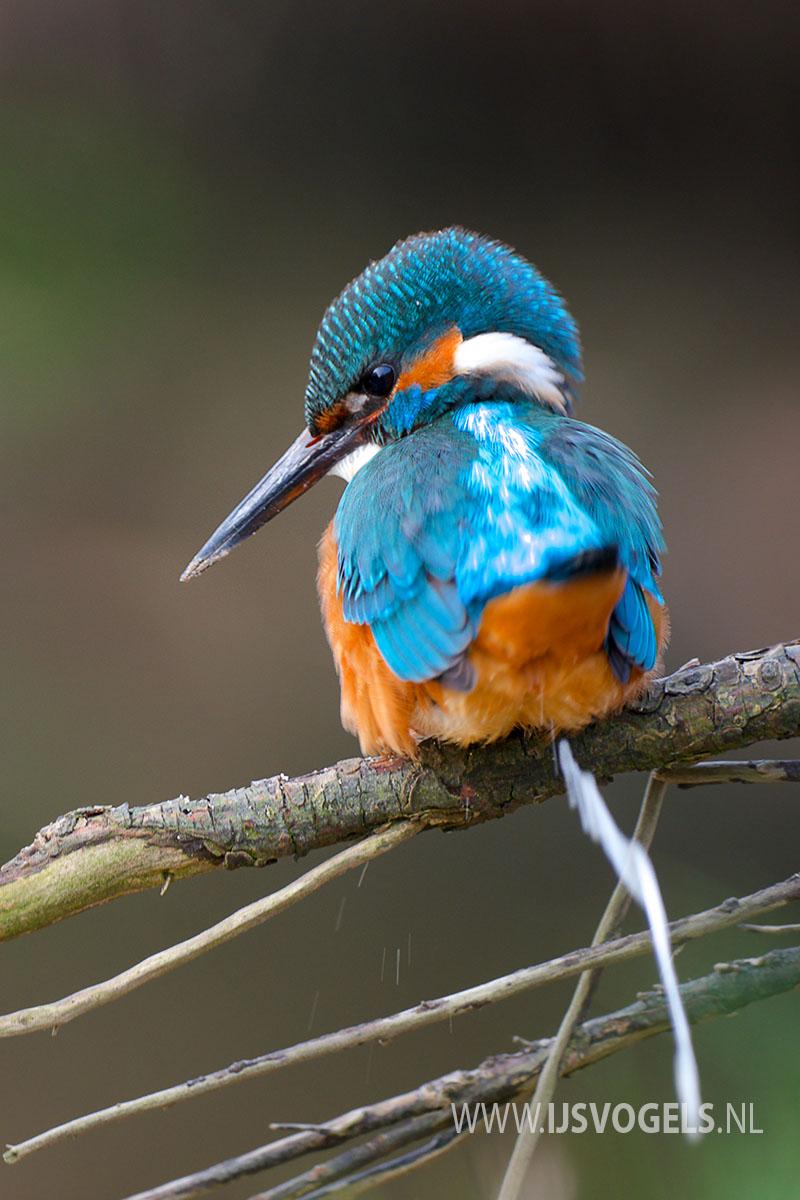
In a kingfisher this results in a white strip of faeces just behind the place where he is sitting, because of the fish-rich diet, the faeces are almost white. In places where a kingfisher is often fishing, resting and / or cleaning and the faeces does not immediately end up in the water, we can find these faeces in the form of long white stripes.
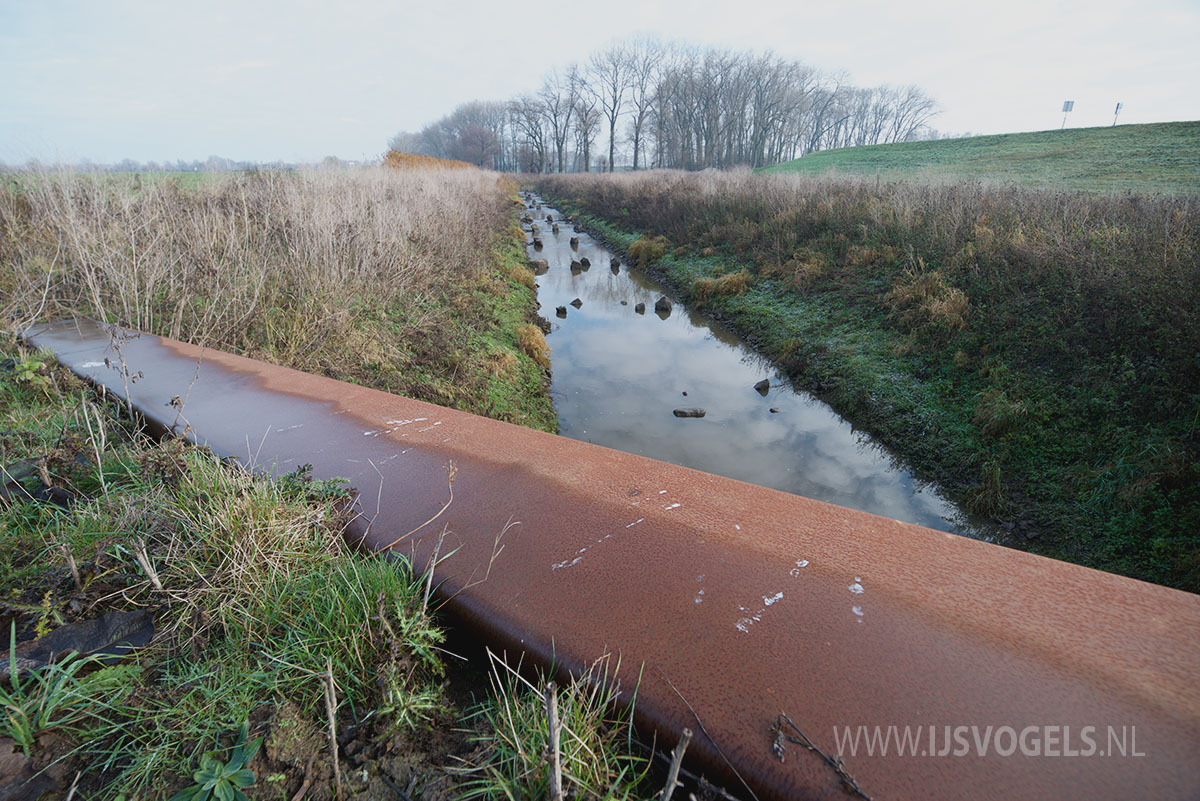
A sheet pile wall near a small stream, clear indications that a kingfisher is regularly fishing here.
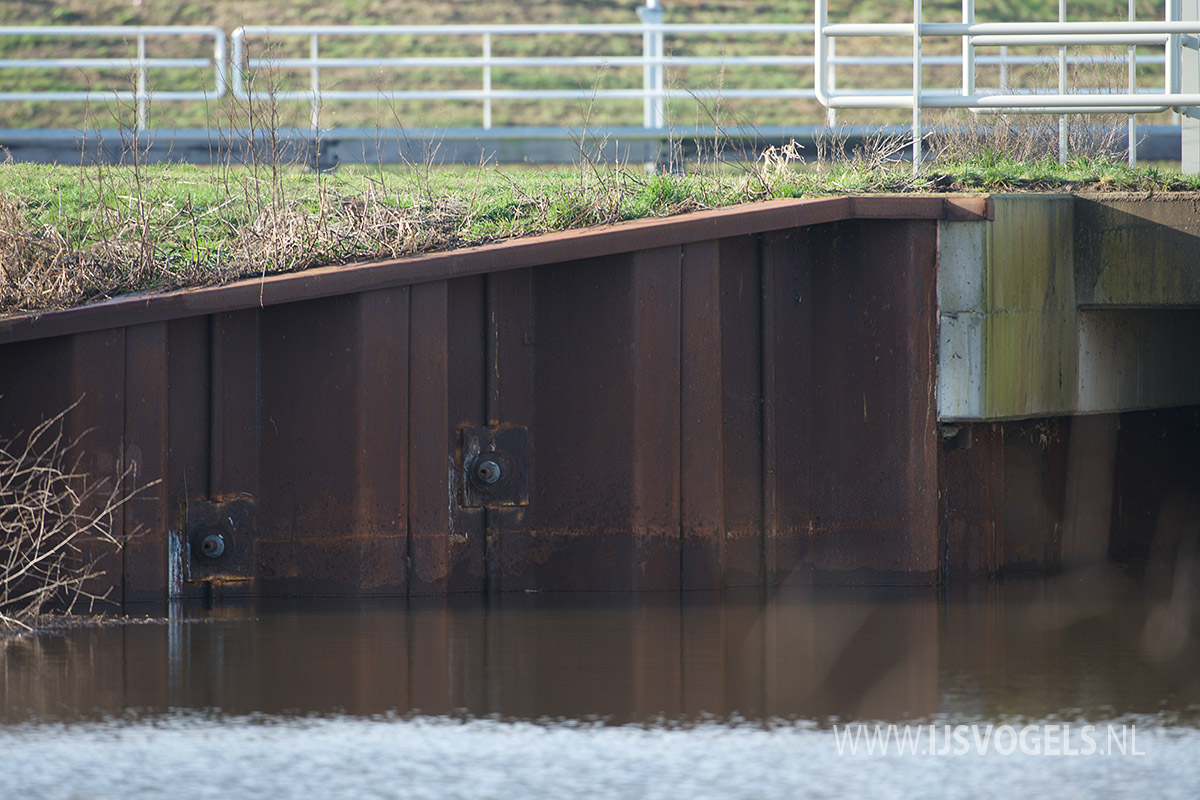
The other side of this sheet pile wall, now with high water, near the two protruding iron bolts, downward running excrement can be seen, especially at the left bolt.
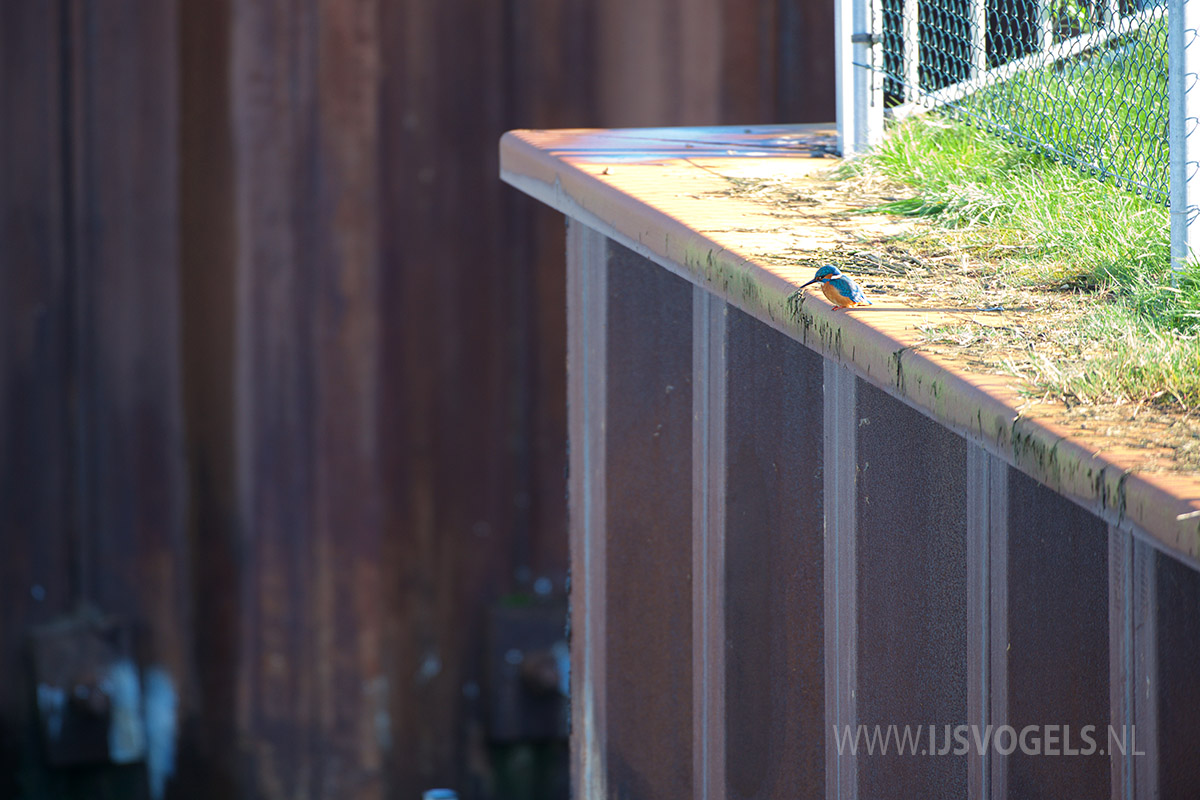
The suspected perpetrator in the picture. These droppings wash away with rain, but immediately give an idea whether the kingfisher is often present at this location.
In addition to the droppings, kingfishers also produce pellets. All indigestible parts are collected in the stomach and regurgitated like a small ball. These balls are about the size of the phalanx of your little finger, beige-white in color and can sometimes be found under a spot where a kingfisher has ejected them. Since no other bird ejects a pellet of this shape, size and color, this is yet another good indication of the presence of a kingfisher.
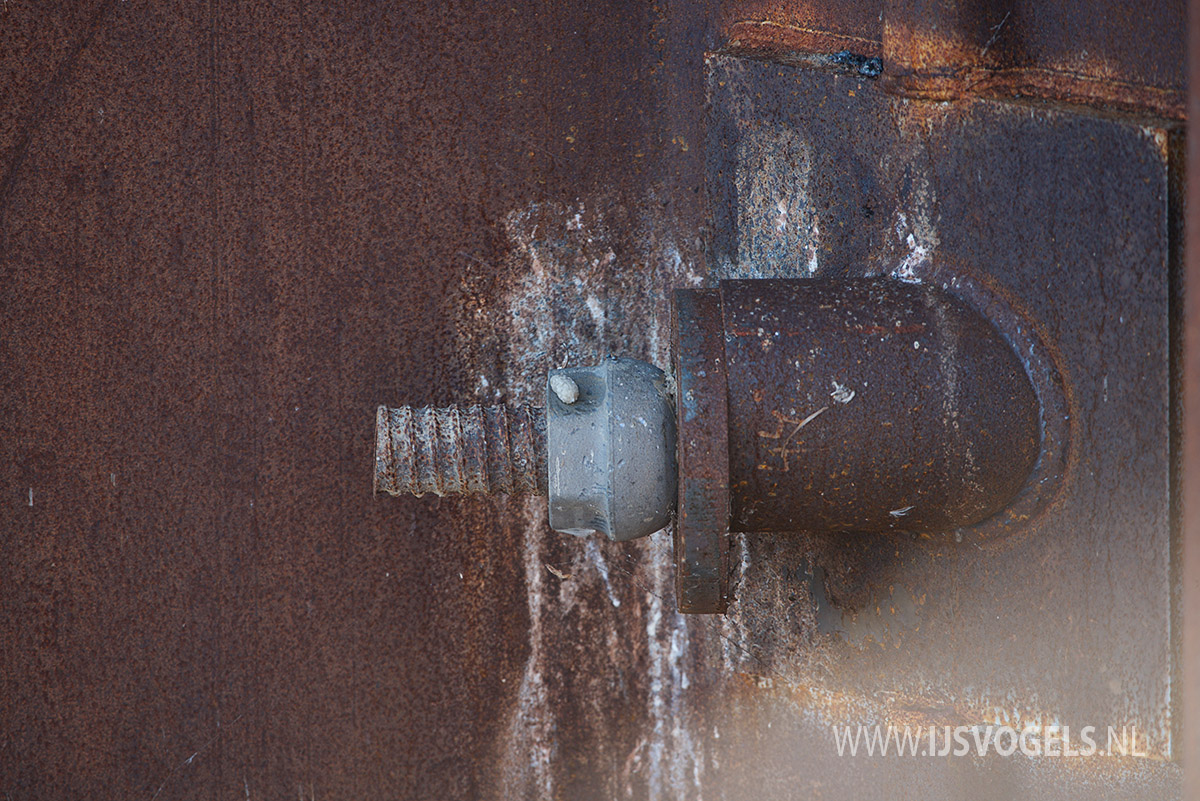
A pellet on one of the bolts of the sheet pile from above, the wet spot shows that it has only just been left there.
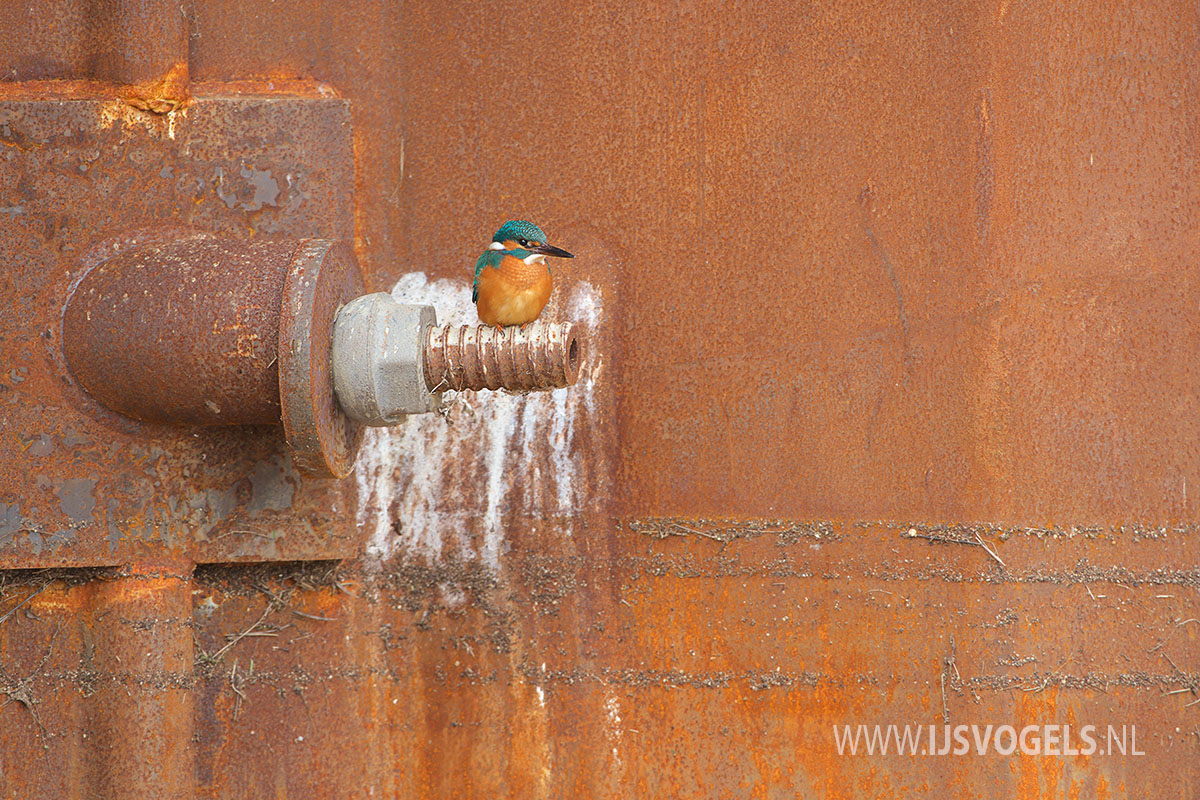
The female that can often be found on and around this sheet pile, behind her the excrements are clearly visible, a very favorite spot! The third clue to the presence of kingfishers is the scales that they sometimes leave behind where they hit the caught fish to death. These tracks are a bit more difficult to find, it depends on the type of fish that is caught, sticklebacks, for example, do not have scales, but roach does, they also release easily during the whacking. Sometimes you come across a branch of which you suspect that it could be very suitable as a lookout, you can even confirm a single scale.
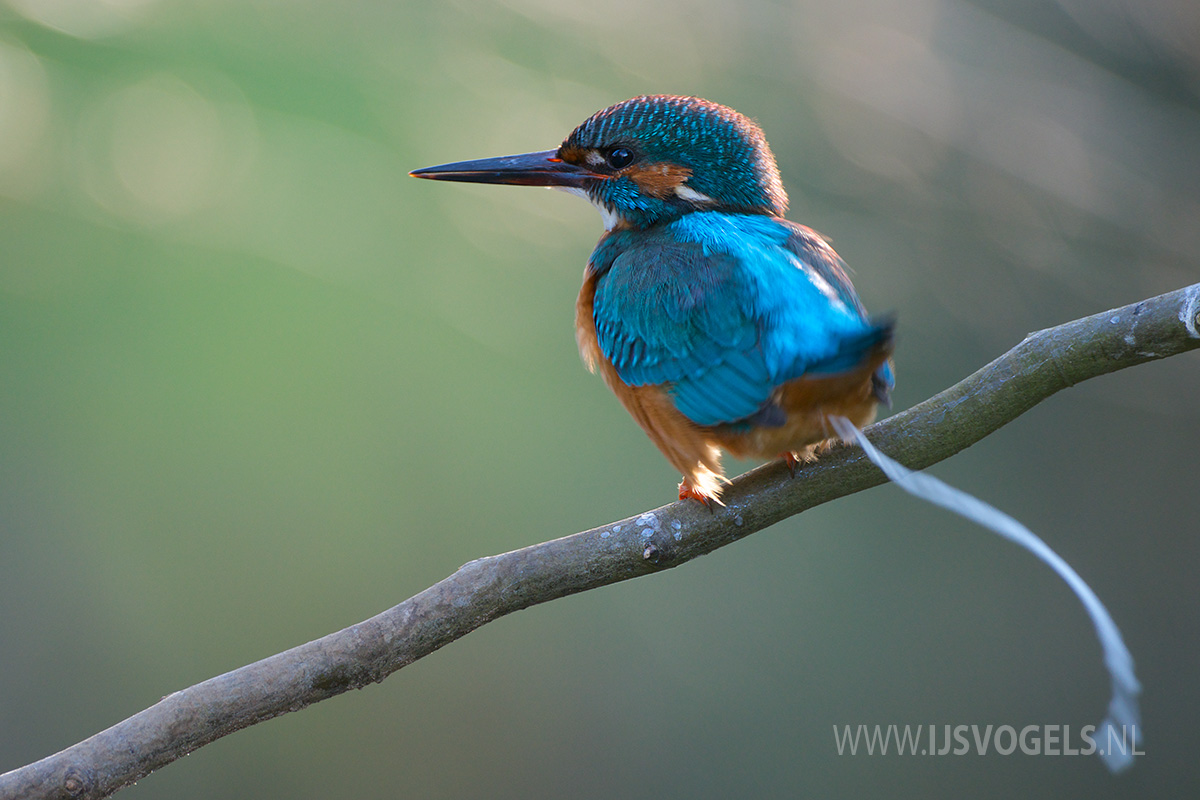
A kingfisher sprays its feces, on its left paw you can see some scales on the beech branch. I hope these tips will give you the pleasure of seeing a kingfisher more often.